
The knee is a complex joint made up of different structures including bones, tendons, ligaments and muscles. They all work together to maintain normal function and provide stability to the knee during movement.

The knee is a complex joint made up of different structures including bones, tendons, ligaments and muscles. They all work together to maintain normal function and provide stability to the knee during movement.
Initial assessment and diagnosis Early review and an expedient management care strategy Option for on referral as needed
Physiotherapy management regime Targeted shoulder rehabilitation Hydrotherapy and exercises
T: (08) 8232 5566 E: [email protected]
Where surgical assessment and care may be required or where conservative management has failed to achieve a satisfactory outcome.
T: (08) 8236 4100 E: [email protected]

The anterior cruciate ligament, or ACL, is one of the major ligaments of the knee that is in the middle of the knee and runs from the femur (thigh bone) to the tibia (shin bone). It prevents the tibia from sliding out in front of the femur. Together with posterior cruciate ligament (PCL), it provides rotational stability to the knee.
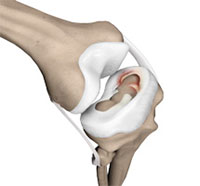
Meniscus tears are the commonest knee injuries in athletes, especially those involved in contact sports. A sudden bend or twist in your knee can the meniscus to tear. This is a traumatic meniscus tear. Elderly people are more prone to degenerative meniscal tears as the cartilage wears out and weakens with age.

Arthritis is a general term covering numerous conditions where the joint surface or cartilage wears out. The joint surface is covered by a smooth articular surface that allows pain-free movement in the joint. This surface can wear out for several reasons; often the definite cause is not known.
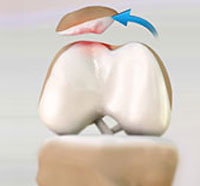
The patella (knee cap) is a protective bone attached to the quadriceps muscles of the thigh by quadriceps tendon. The patella attaches with the femur bone and forms a patellofemoral joint. The patella is protected by a ligament which secures the knee cap from gliding out and is called a medial patellofemoral ligament (MPFL).

Loose bodies are small loose fragments of cartilage or a bone that float around the knee joint. The loose bodies can cause pain, swelling, and locking, and catching of the joint.

High tibial osteotomy is a surgical procedure performed to relieve pressure on the damaged site of an arthritic knee joint. It is usually performed in arthritic conditions affecting only one side of your knee and the aim is to take pressure off the damaged area and shift it to the other side of your knee with healthy cartilage.
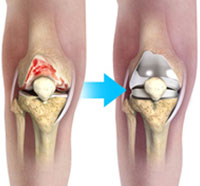
Unicompartmental knee replacement is a minimally invasive surgery in which only the damaged compartment of the knee is replaced with an implant. It is also called a partial knee replacement.

Total knee replacement, also called total knee arthroplasty, is a surgical procedure in which the worn out or damaged surfaces of the knee joint is removed and replaced with artificial parts. The knee is made up of the femur (thigh bone), the tibia (shin bone), and patella (kneecap).
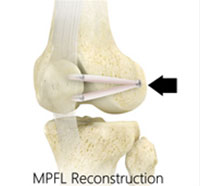
Medial patellofemoral ligament reconstruction is a surgical procedure indicated in patients with severe patellar instability. The medial patellofemoral ligament is a band of tissue that extends from the femoral medial epicondyle to the superior aspect of the patella.
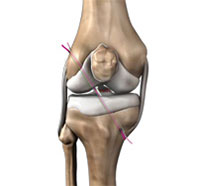
The anterior cruciate ligament (ACL) is one of the major stabilizing ligaments in the knee. It is a strong rope like structure located in the centre of the knee running from the femur to the tibia. When this ligament tears, unfortunately, it does not heal and often leads to the feeling of instability in the knee.






